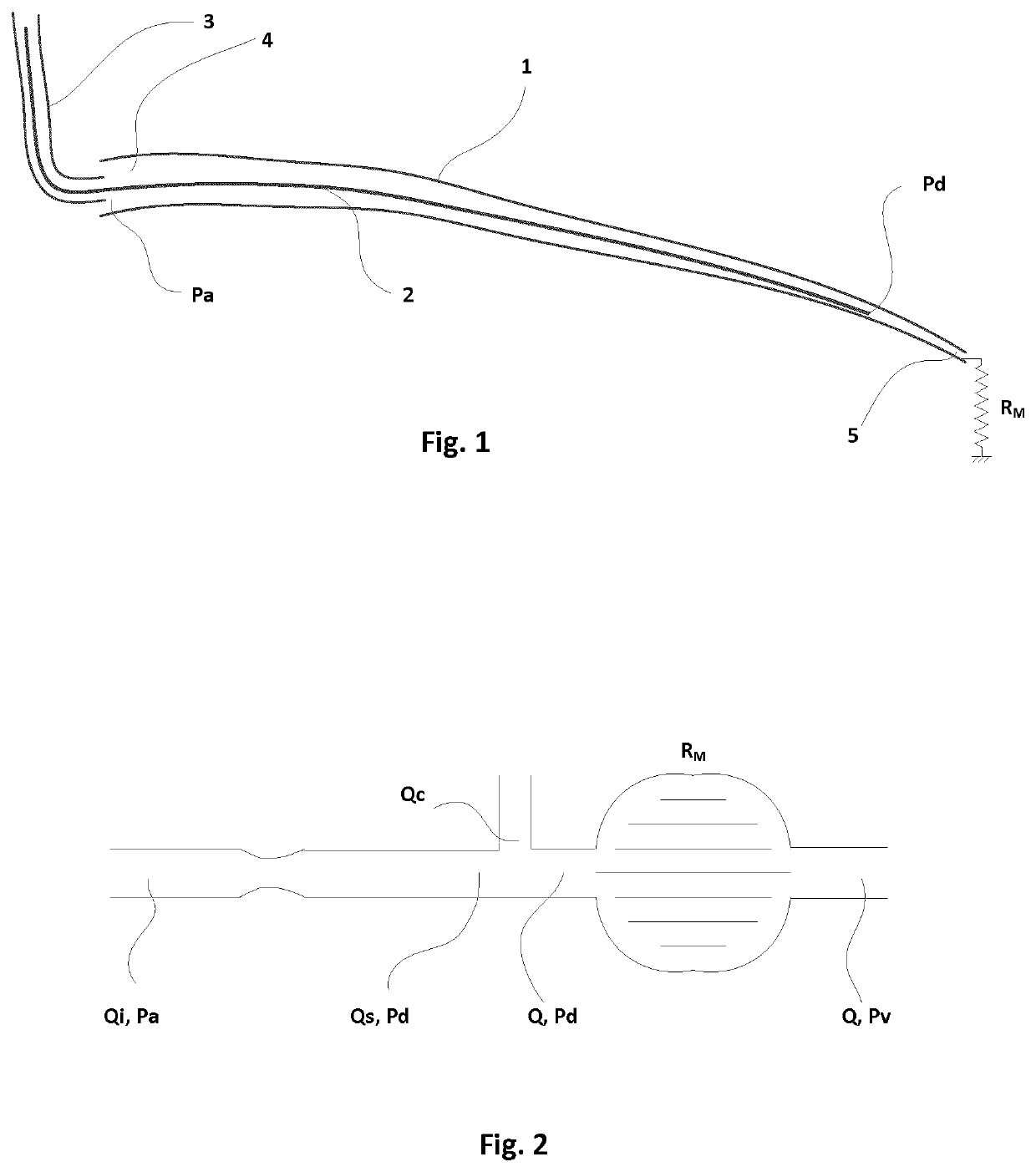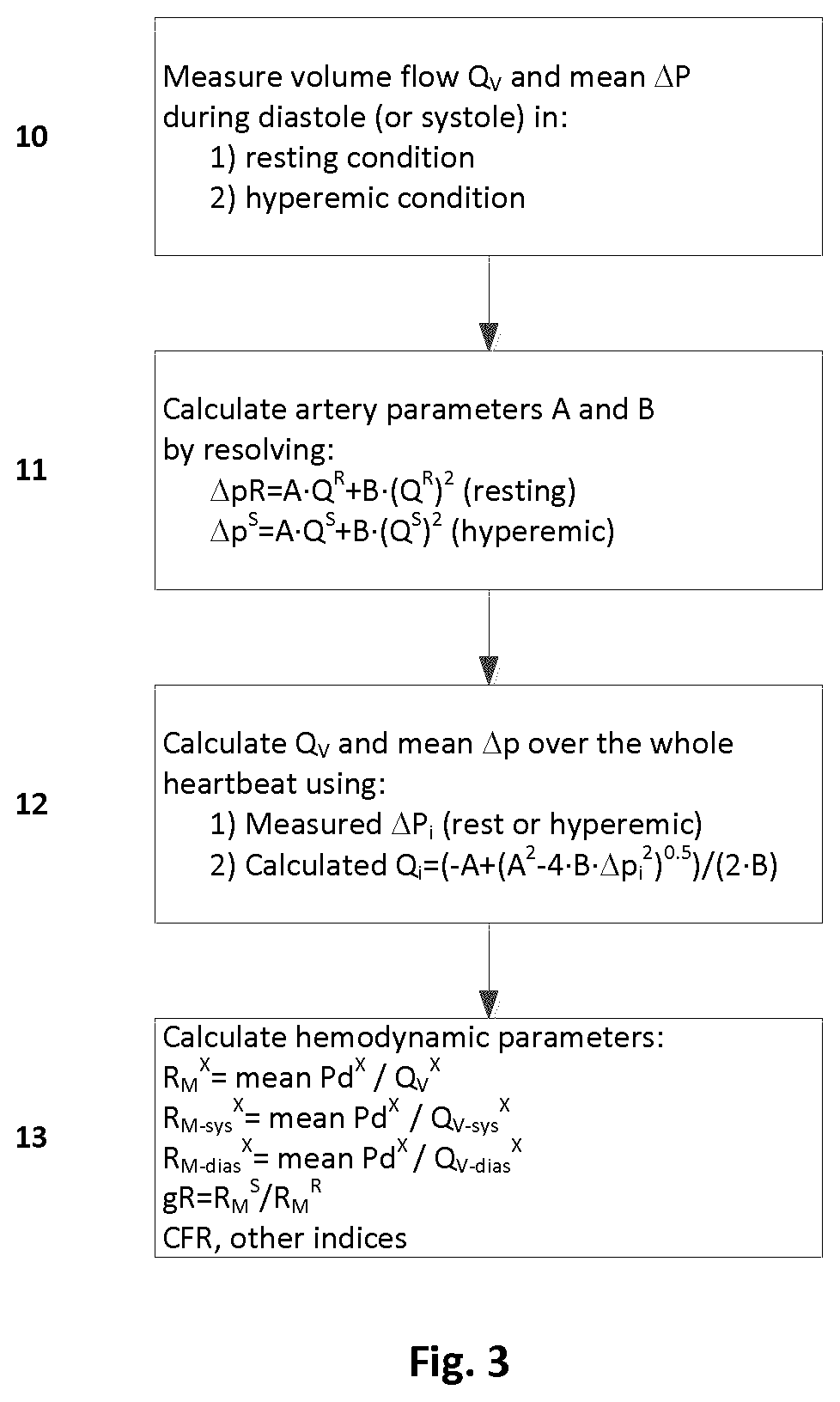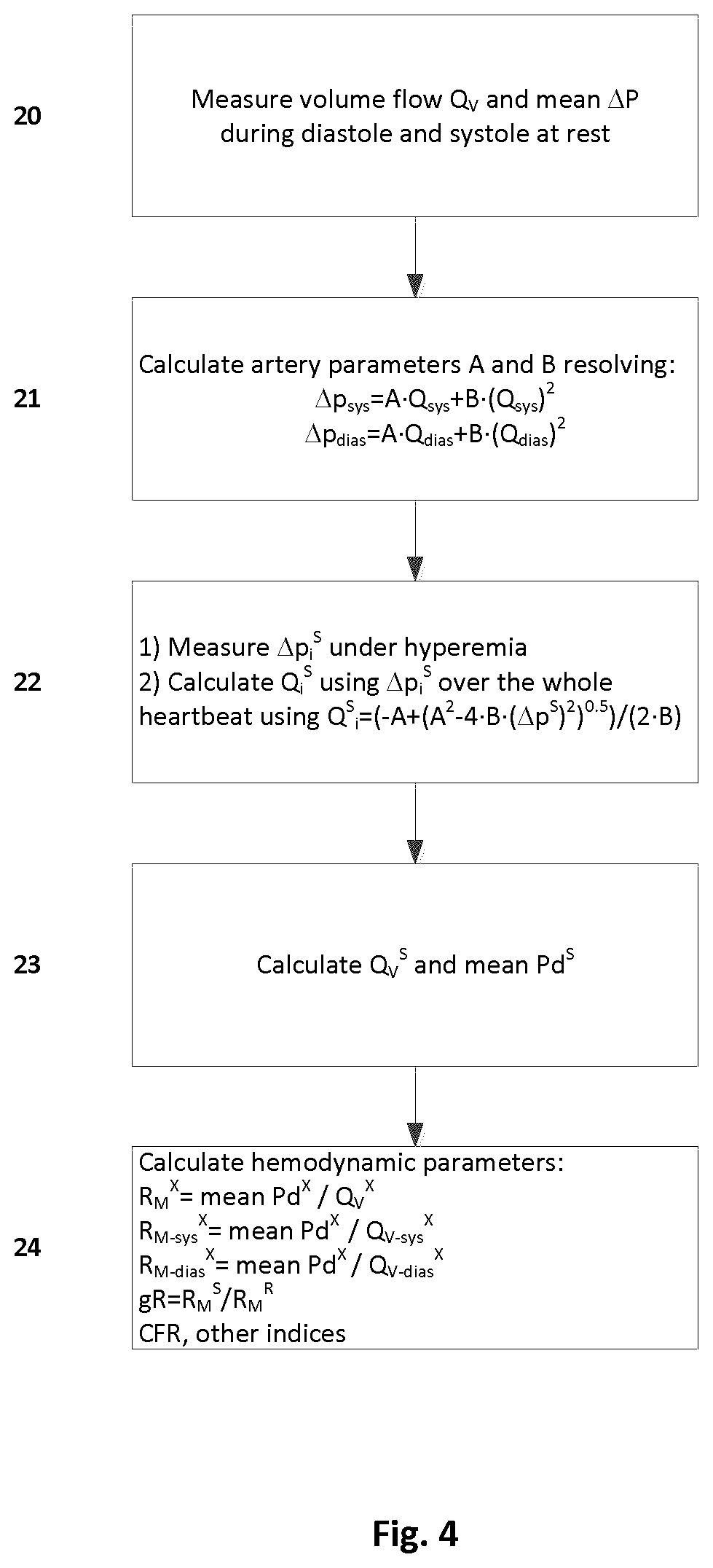Hybrid image-invasive-pressure hemodynamic function assessment
a technology of hemodynamic function and hybrid image, applied in the direction of angiography, instruments, catheters, etc., can solve the problems of increasing the time and cost of procedures, underestimating the severity of the lesion, and not common practice in measuring microvascular resistan
- Summary
- Abstract
- Description
- Claims
- Application Information
AI Technical Summary
Benefits of technology
Problems solved by technology
Method used
Image
Examples
Embodiment Construction
[0054]The method according to an embodiment involves the simultaneous (or synchronous) combination of an invasive pressure measurement instruments, such as an intravascular pressure measurement device (e.g., a pressure guidewire) with a non-invasive instrument such as a medical imaging instrument which takes medical images of the artery. The method is for determining a blood flow with greater precision in order to determine other values which depends on a proper measurement of the blood flow.
[0055]Instead of using non-invasive instruments in replacement of invasive instruments, as typical in recent prior art methods, and which involves drawbacks as discussed above, the methods according to the invention use both together. This combination allows precise pressure measurements from the intravascular pressure measurement device and complement those with medical images that personalize the calculation of hemodynamic parameters with real data, in real time, on the geometry of the artery ...
PUM
 Login to View More
Login to View More Abstract
Description
Claims
Application Information
 Login to View More
Login to View More - R&D
- Intellectual Property
- Life Sciences
- Materials
- Tech Scout
- Unparalleled Data Quality
- Higher Quality Content
- 60% Fewer Hallucinations
Browse by: Latest US Patents, China's latest patents, Technical Efficacy Thesaurus, Application Domain, Technology Topic, Popular Technical Reports.
© 2025 PatSnap. All rights reserved.Legal|Privacy policy|Modern Slavery Act Transparency Statement|Sitemap|About US| Contact US: help@patsnap.com



